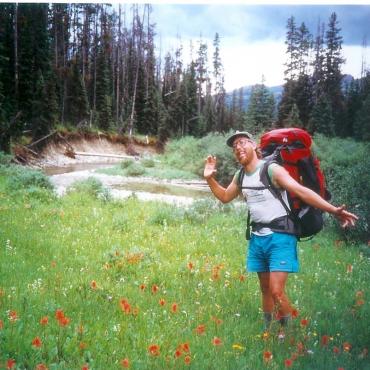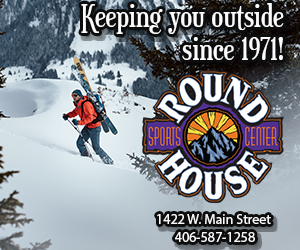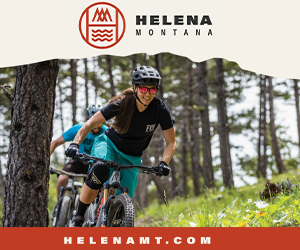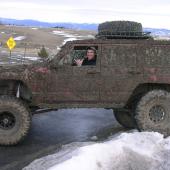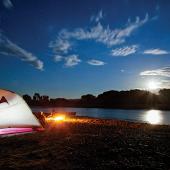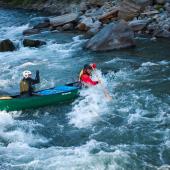To the Wild End by Canoe
Paddling Yellowstone Lake.
Looking for a big-time paddling adventure close to home? Want a flat-water canoe or kayak trip that will test your skills and your endurance? Try Yellowstone Lake, the largest lake above 7,000 feet on the continent, home to grizzly bears, cutthroat trout, breeding white pelicans, river otters, and water rats of the two-legged kind. This lake makes an ideal destination for well-equipped, experienced big-water boaters. Suitable for canoes or sea kayaks, Yellowstone Lake offers over 100 miles of shoreline, fantastic camping and fishing, and an incredible array of wildlife.
This is a very strange and fascinating place. Under its 400-foot-deep waters are geothermal vents, "smoking" columns similar to those found on the mid-Atlantic Ridge, and much of the biggest volcanic explosion crater in North America.
However, this lake is not for neophyte boaters—it's so big and cold it makes its own weather, especially high winds, which can whip up waves five feet high. Tip your boat any distance from shore and you’re history, as the water is so cold (about 45 degrees) that hypothermia will set in quickly. If you stick close to shore, however, and get off the water when wind and storms hit, Yellowstone Lake is relatively safe, and the adventure is well worth the risk. Given their distance from shore, most of the lake’s islands are inaccessible to canoes and kayaks. Yellowstone Lake is open to powerboats, but for a true wilderness trip I recommend self-powered craft (plus power boats are banned from the southern end of the lake).
In late summer my wife and I set out to canoe the roadless southern shore of the lake. We arranged for the concessionaire at Bridge Bay marina to pick us up via boat the following weekend so we would not have to canoe all the way back. (See sidebar for details.)
We launched at West Thumb, planning to canoe through Flat Mountain Arm, the South Arm, and the Southeast Arm. We'd reserved all our campsites, for six nights, with the Park Service. Leaving Bozeman in the wee hours, by late morning we were paddling away from Grant Village, the boat loaded with a week’s worth of gear in drybags and our food stuffed in a cooler. It was fantastic to be out on the water, which was so clear we could see 30 feet down. We could also see smoke columns rising to the north, where forest fires were starting.
West Thumb—a huge bay that’s an old explosion crater—is notorious for its winds, which soon started raging, kicking up the lake’s infamous waves. Rounding Breeze Point we found ourselves surfing the waves, but the boat rode high and proud and we made it in style.
In camp that night it was quiet and cool, and there was frost on the ground in the morning. There was also a lot of smoke in the air. At night we watched the fires flare up to the north of the lake, and could see the spooky orange glow of one of the fires.
After long days of paddling we were plenty ready to get into camp. Yellowstone Lake has some of the finest campsites anywhere, with nice gravel and sand beaches to lounge on and beach-comb. And don’t forget the swimming. The water is cold, but incredibly refreshing—when it’s warm out and taken in short doses, of course. Thanks to the capacity of our boat we also enjoyed some luxuries, like chairs, beer (an essential, actually) and fresh food like cheesecake and fruit.
Wildlife was always in evidence. There were bear and wolf tracks on the beach, and bald eagles perched in trees. Ospreys were feeding newly fledged young. We heard loons calling and elk bugling. On a beach where we stopped to rest I found the still-wet tracks of four otters, and we soon spotted the otters, which warily swam away from us, rising up out of the water, huffing and staring.
Deep in the Southeast Arm are the Molly Islands, which host a huge breeding colony of white pelicans. We skirted the islands, which are closed to people and were bristling with pelicans.
On our third day out, we had a big crossing to make—the South Arm—to avoid a long paddle all the way around the arm. This crossing is NOT recommended. The South Arm, eight miles long and three wide, is big enough to be a large lake on its own. Paddling like fiends, we made it across in 20 minutes, just as the wind began to rise.
At Promontory Point we grabbed the fishing rod and paddled to the creek that trickles out of the woods from Alder Lake, then bushwhacked to the lake. It was a wild and lovely spot, with lots of waterfowl floating about. The fish were elusive, however.
We also reached the southernmost end of the lake by day-tripping via canoe from camp. We found it way back in a shallow, weedy bay that was alive with waterfowl. I had been to this spot in 1989 on foot, so it was great to return via water.
In the Southeast Arm, the Yellowstone River enters the lake from its headwaters deep in the Teton Wilderness. We’d been to the headwaters in 1991, on Younts Peak, where the river begins in a tiny glacier. As we paddled to the river mouth, through shallow water, thousands of ducks and geese moved around us. It was a veritable kingdom of birds. A peregrine falcon landed on the shore near us with a fresh-killed goldeneye duck and proceeded to pluck its feathers.
After lunch on our last day, our shuttle boat arrived almost on schedule; we loaded our gear on the metal-bottom boat and strapped our boat on top. Off we went, full tilt. It was a wild ride across the lake as there were five-foot waves in the middle. Our young pilot floored it and we caught air off the waves. It was sobering to see how big the waves could get on this lake—we’d have been in serious trouble in a canoe. At last we pulled into Bridge Bay marina. Terra Firma!
Don’t miss the chance to explore this fabulous lake. From a short walk on its wild beaches to multi-day wilderness boat adventures, Yellowstone Lake is as wild as it gets.
Planning Your Yelowstone Lake Adventure
A permit is required for all boats and can be obtained in person at most ranger stations for $10 (annual) or $5 (seven-day) for non-motorized vessels. A Coast-Guard-approved, wearable PFD is required for each person.
You can arrange boat shuttle service at Xanterra Parks & Resorts at Bridge Bay Marina on Yellowstone Lake by calling (307) 344-7311.
Boats are prohibited on all Yellowstone Park rivers and streams except the channel between Lewis and Shoshone Lakes.
You may pick out your campsites and reserve them in advance for a $20 fee at www.nps.gov/yell/publications/pdfs/backcountry/index.htm. Backcountry campsites are also available first-come, first-served 48 hours in advance.
Required Gear
In addition to the usual camping gear, be sure to bring the following:
-Pepper spray for defense against bears
-Extra paddle(s)
-Stout rope for hanging food
Practice bear-safe camping, and hang all food at night. All lakeside camps have bear poles for food-hanging.
Fishing
All native sport fish in Yellowstone—cutthroat trout, Montana grayling, and mountain whitefish—are catch-and-release only. Fishing season in Yellowstone Lake opens June 15. Streams flowing into Yellowstone Lake and areas within 100 yards of stream outlets open on July 15. Pelican Creek and its tributaries are permanently closed to fishing.
ALL lake trout caught in Yellowstone Lake, its tributaries, and the Yellowstone River must be killed. If you do not want to keep the fish, puncture its air bladder and drop it into water as deep as possible. Anglers that catch lake trout must report the number and catch location to the NPS (verbally or by using the report card provided with the permit).
Yellowstone Lake Topo
For detailed geography on Yellowstone Lake, go to www.mytopo.com and create your own customized topo map. After selecting the general location, center the map exactly where you want and add the optional latitude/longitude tic marks. Navigational gurus can even add full UTM gridlines. Paper choices include waterproof/expedition or glossy for indoor use. Maps range from ten bucks for a standard 18”x24” to $30 for the large 36”x44”; shipping takes just a couple days. MyTopo also has aerial photos of most map areas. From the home page, click “Build a Map” and then enter Yellowstone Lake.

